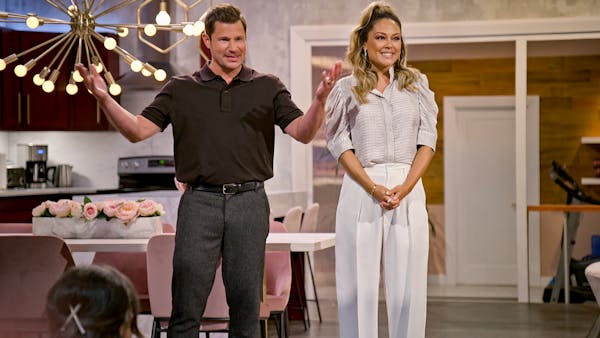Not long ago I was talking to legendary high school coach Larry McKenzie about the pressures placed on kids as young as 9 to specialize in a single sport. Parents who want their kids to succeed are signing them up for yearlong training and tournaments, leaving their schedules so packed that there's room for nothing else.
"Kids don't get to be kids anymore," said McKenzie, who recently retired. "The specialization, it blows my mind. There are so many kids, because they're engaging so early, by the time they get to 14, 15, the age of trying out, they're burnt out. They don't even enjoy it."
Kids should be dabbling in a variety of activities, he said. Sampling different sports helps them rotate through muscle groups and develop a wider range of skills, while preventing injury and burnout. It also exposes children to a more diverse group of friends.
Yes, yes, I concurred, and thought about the competitive suburban soccer club that my fourth-grader had been playing with throughout the year.
On an intellectual level, I agree 9 is way too young for kids to declare a sport and wave off all others. I have no delusions that my child will grow up to be an elite, professional or even a college athlete. My only dream for him is to be middling player in the sport of his choice with the option to make his high school team, if he so desires. But it feels like even that path today requires a costly, high-stakes investment that takes some of the fun out of youth sports.
A 2019 study from the Aspen Institute's Project Play said the average child plays a sport for less than three years, quitting at age 11, in many cases because they stopped enjoying it or lost interest. The study found they are rarely quitting to take up another sport.
Here's why it's concerning: Research shows that participating in sports is linked to better social, mental and physical health, and yet most teens aren't getting the daily hour of exercise they should.
My generation can remember when local recreational youth sports programs, paired with unstructured play on the street or city parks, were all you needed. No third-grader was cut from the team because of a lack of ability. Ten-year-olds weren't conditioned to think it was "too late" to try a new sport. But sadly, these are heartbreaking realities for the modern child.
Youth sports have become a mindboggling $19 billion industry, more than the value of the NFL, according to Linda Flanagan's new book, "Take Back the Game: How Money and Mania Are Ruining Kids' Sports – and Why it Matters." Families with higher incomes will burn lots of cash for their kids' travel team fees, transportation and gear. For instance, hockey parents spent on average roughly $2,600 a year, according to the Aspen study, while the average across sports was about $700.
That's created a youth sports ecosystem of haves and have-nots. And if the kids who specialized early are getting burned out by 11, they've crowded out late bloomers or kids whose parents can't afford intense, pay-to-play programs.
Ironically, research has shown that the more a parent spends on youth sports, the more pressure the child feels and the less they enjoy it.
Club sports and year-round specialization have been trending for the past 20 years, if not more, said Nicole LaVoi, Director of the Tucker Center for Research on Girls & Women in Sport and a faculty member at the University of Minnesota. "That's because publicly funded community-based sports has been declining," she told me. "Clubs have filled the gap."
Kids are like most humans — they gravitate to activities in which they excel. But young children are still developing. Smaller or less coordinated kids who have the potential to grow into their skills are at greater risk of dropping out, LaVoi said.
"Unfortunately, kids by age 10, if they haven't been playing a sport, they will feel behind," said LaVoi, a former college tennis player who was involved in multiple sports in high school. "The problem with that is the degree of confidence they feel they can do something is the biggest predictor of staying in it. If they try it and say, 'I'm behind, all the kids are better,' they're not going to stick with it. Kids don't want to be perceived as the weakest link."
McKenzie, the basketball coach who led his teams to six state championships, said he scratches his head at the idea of 5-year-olds traveling to youth tournaments in the summer or being dropped off at private clubs for hourlong practices. He teases his son, who trains kids at a youth basketball academy: "You might think you're training, but you're just a highly paid babysitter."
He encouraged his athletes to play a different sport in the offseason. His own children, who played college Division I basketball, had varied interests, including band and beauty competitions.
When he spoke to college recruiters who had an eye on any of his players, many would ask if the athletes played anything else. "College coaches want players who have played multiple sports," he said. "It's considered an extra asset."
Maybe those coaches have read the research showing that generalists, not specialists, are more likely to play at the elite level.
David Epstein, author of the book "Range: Why Generalists Triumph in a Specialized World," said most elite athletes grow by trying a variety of sports "and delay specializing until later than their peers who plateau at lower levels," he writes. "The way to develop the best 20-year-old athlete, it turns out, is not the same as the way to make the best 10-year-old athlete."
As for my son, he just wrapped up his last soccer game of the year. He asked to pause for winter. After reading the research, I'm happy to follow his lead. We're using this hiatus to relax and explore other activities, from snowboarding to pickleball.
But we have just a short window of time to dabble. Training for the "summer" soccer season starts in February.

Yuen: When cancer struck a second time, she found 'euphoria'

Yuen: The University of Minnesota's first male dance team member is turning heads by staying real
Yuen: How George Floyd's aunt healed her heart and lent her voice for justice

'This is an uprising': An oral history of the 6 days after George Floyd's murder




